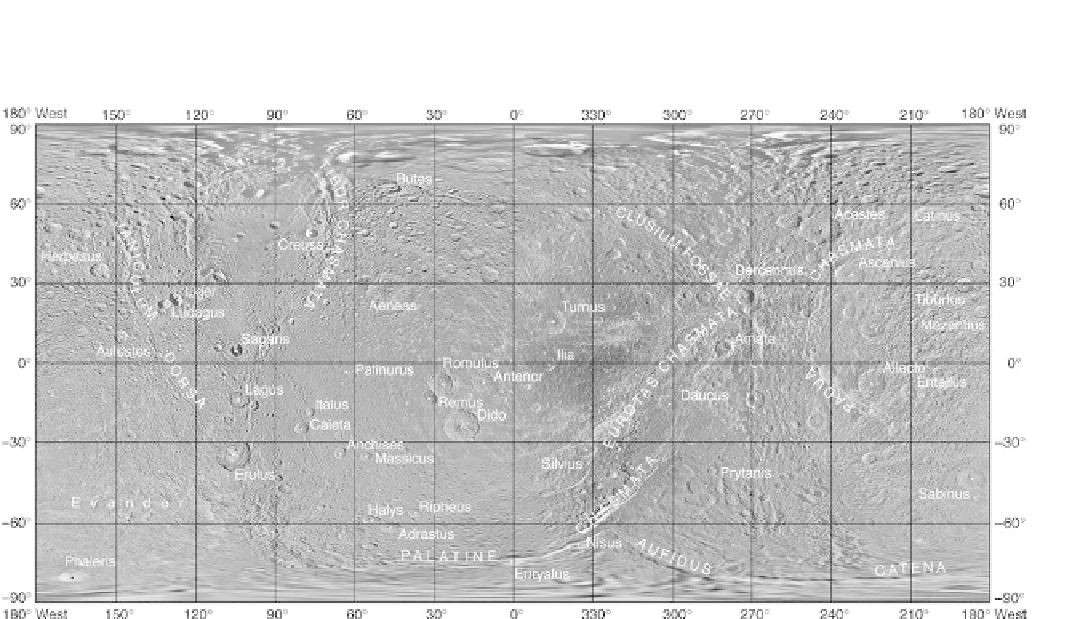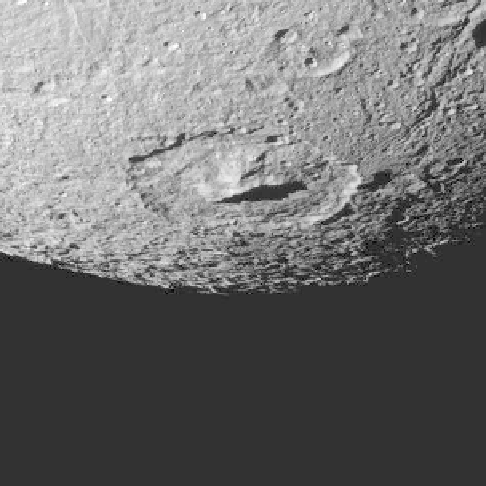Geology Reference
In-Depth Information
Figure 9.29. A mosaic of images for Dione with prominent place names (from Roatsch et al.,
2009
).
liquid water froze early in Tethy
'
s evolution, causing ten-
sional fractures in the outer ice crust.
As on Mimas and other icy satellites, slopes on Tethys
display downslope movement of debris by mass wasting.
Its surface is further modi
ed by the proximity of Tethys
to the E Ring, which is fed water-ice grains by eruptions
from Enceladus. These grains are thought
to impact
Tethys, contributing to its very high albedo.
9.7.3 Dione
Dione is 1,120 km in diameter, or about the same size as
Tethys, but is considerably more dense. At 1.43 g/cm
3
,it
is composed of water and about 46% rocky material, more
than the other satellites of Saturn. Dione
'
s surface consists
of heavily to lightly cratered plains and terrains that are
tectonically modi
ed (
Fig. 9.29
). The heavily cratered
terrain is on the trailing hemisphere, where the largest
craters are found, while the leading hemisphere is more
sparsely cratered. Prior to the imaging of Dione, some
planetary scientists had suggested that the leading hemi-
sphere should be more heavily cratered. When just the
opposite was found, it was suggested that Dione might
have been locked with Saturn in a different position, and
that large impacts could have re-oriented the moon. The
discovery of many large craters on Dione tends to support
this hypothesis. Craters >80 km typically have central
Figure 9.30. An oblique view of the southern hemisphere of Dione
and Erulus crater. This impact structure is 120 km across and has a
large central peak (NASA Cassini PIA12743).
peaks (
Fig. 9.30
). Seen in detail (
Fig. 9.31
), the steep
slopes on the crater walls and central peaks are generally
bright, indicative of exposures of fresh ice by mass
wasting, while the crater
oors tend to be darker.



